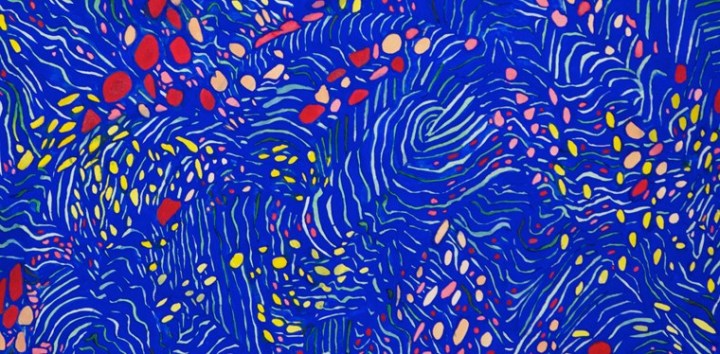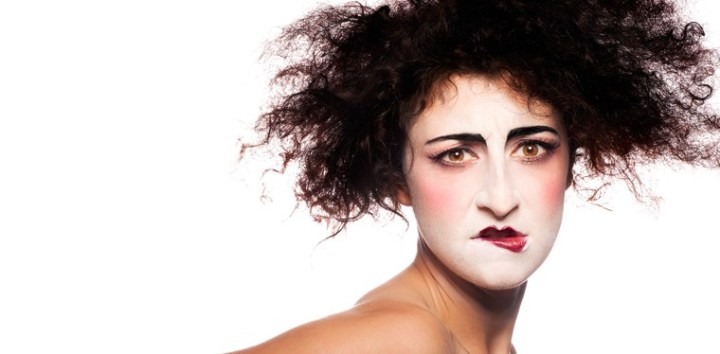It’s ladies night!
I won’t say I was getting tired of one-man shows, but…I was really ready for some strong female voices to come at me after a spate of male ones.
Granted, there has been excellent representation of female voices and visions in the shows I’ve seen this Fringe: there was TCRF’s Inside We Hide, which was written by a woman and performed by two more fierce women; there was The Open Lid Ensemble’s Halina that was all-female except for the musician, On the Face of Things was written by a woman, Awkward Con-Nections was choreographed mostly by women (if I’m not mistaken), TLGH’s The Crossing was written and directed by two women, and of course we had the hyperfem MKA: Being Dead (Don Quixote).
So I’m not crying foul, far from it. I simply happen to have hit a run of one-man shows in the last week, so I was really looking forward to breaking that trend.
I was in luck. Two of the best shows I’ve seen thus far came in one night, and both from women. Let’s take a look at these two shows: Anya Tate-Manning’s My Best Dead Friend and Randa Sayed’s Experience and the Girl.
My Best Dead Friend | Gypsy Wife Productions
Anya Tate-Manning comes to us from New Zealand. She brings with her her fiance who’s doing her tech, and she hopes the engagement will last through their trip to Australia, she confides. Tate-Manning has been waiting patiently for us to take our seats, standing centre stage, doing little dances and smiling a whole lot. Her happy, welcoming expression puts us at ease and gives the room a casual atmosphere. And as she introduces herself and gives a little exposition, that casual, loose atmosphere prevails.
She gets the audience involved straight away; she describes what life was like in Dunedin in the 90s, and then begins describing her circle of friends. She hands an audience member a big slate and a piece of chalk – they are to draw the face that Anya is describing. Her descriptions of her four friends are funny, and produce some equally funny results from the four audience artists. She tacks these slates to the walls to serve as reference points for the story she’s about to tell. Somewhere during the prologue, she also does a Dylan by giving a rapid fire history of Dunedin from colonisation up to the 90s using cue cards a la “Subterranean Homesick Blues.” Her razor-sharp perspective is hilarious and refreshing.
Finally she’s ready to begin her story. She overlays two events: a night when she and her friends started a revolution by drawing lines of poetry on the streets in chalk, and her best dead friend’s funeral. She switches back and forth using lighting state changes, and all the while, she’s drawing a landscape of her town on the back wall with chalk. The effect is anything but jarring, this pendulum swinging from youthful optimism to grief; in fact it feels gentle and endearing.
There’s one perfect moment in particular that nearly had me in tears: at a certain point in her story, her friend Emma begins to sing Leonard Cohen’s “Suzanne” in the town square, and the song begins to play in the theatre. It felt like Tate-Manning had gently placed a gift in my lap, and I can’t think of a finer pairing of narrative and music in a long time.
Tate-Manning’s storytelling, while not impeccable, is completely disarming and natural. She captures two moments in time and interlaces them beautifully, with sincerity, humour and affection. Her black-and-white chalk-drawn world is full of colour, painted by her words.
Experience and the Girl | Circlestances Productions
Up next in the studio is a show billed as “A ‘Sexy’ Islamic Clown Show” by Randa Sayed. Now, I’ve had a couple of people say they thought there would be more actual clowning and that they were expecting more of a comedy, given that it’s billed as a clown show. Surely they’ve heard of sad clowns? Well, Sayed’s not a sad clown either: she’s more of a timid, nervous clown. And the show is funny, but it’s not just funny; it’s also eye-opening, brave and fierce.
Sayed, a timid figure in white clown facepaint, greets us at the door, holding two plates, one with homemade hummus and the other with flatbread. Everyone samples a bit as we file in, and the nervous little clown gives us a quick nod and blink as we thank her. Once we’ve all settled in, the show begins with a lengthy disclaimer/warning from a disembodied female voice while Sayed runs in place, in mime fashion. This disembodied voice continues to act as Sayed’s inner voice, as Sayed does very minimal speaking.
Sayed begins her story on the train, where she gets off at Redfern station to get to uni. On her way she encounters the male gaze, and reacts as a “good Muslim girl should,” by walking business-like and ignoring his stares. Once on campus, she sees a sign for Theatre Sports and decides to go to the theatre. There she sees a young man she instantly falls head over heels for, and her whole interior life is sent into a tailspin.
She feels conflict between her religion and her instincts and urges for intimacy, so she does what many people do these days and consults the internet. With her laptop as her guide through the labyrinth of courtship, and her fervent prayers as an anchor to tradition, she begins to work through her inner turmoil. And what emerges is something fierce.
The piece sees a slow transformation of an anxious girl into a confident woman who takes control of her emerging sexuality by emulating Beyonce. The physical transformation is astounding. She goes from all closed in, pigeon-toed and fidgety with almost every inch of her body covered, to a powerful grown woman in towering heels and one-armed black leotard, hair wild and flowing free. You wouldn’t believe it’s the same woman.
And herein lies the affirmation the show seems to provide: even the meekest of creatures may have something fierce inside them struggling to be let loose. Sayed seems to say: acknowledge it, own it, experience it.
There is a fair bit of audience participation, which could get out of hand if Sayed weren’t totally in control. The voice that speaks for Sayed throughout plays a very important role in the show, and she and Sayed maintain excellent connection throughout. Getting along to this Fringe gem is an experience you won’t regret.
CICELY BINFORD
Both shows run until Saturday the 13th, so don’t miss out. Visit The Blue Room Theatre website and book here.


